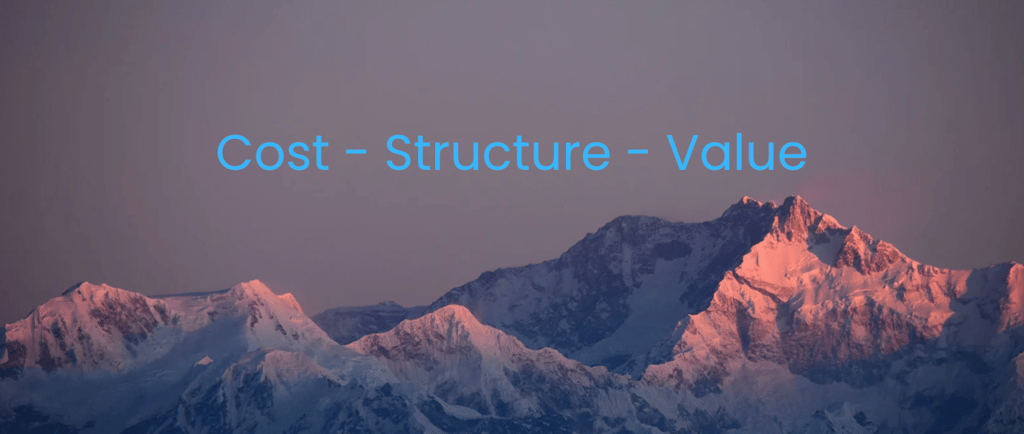The Great Recalibration: Moving Beyond Tech Hype to Real Strategy
Every few years, a transformative technology bursts onto the scene, igniting a firestorm of excitement across the business world. The potential seems infinite, the promise revolutionary. We saw it with the dawn of the internet, the rise of mobile, and the advent of the cloud. Most recently, Artificial Intelligence has played this role, dominating boardroom conversations and strategic planning sessions across every sector from finance to healthcare, manufacturing to retail.
David Hole
7/15/20257 min read


Every few years, a transformative technology bursts onto the scene, igniting a firestorm of excitement across the business world. The potential seems infinite, the promise revolutionary. We saw it with the dawn of the internet, the rise of mobile, and the advent of the cloud. Most recently, Artificial Intelligence has played this role, dominating boardroom conversations and strategic planning sessions across every sector, from finance to healthcare and manufacturing to retail.
For a time, the mood was one of unbridled optimism. Eager to be seen as innovators and determined not to be caught flat-footed by the next wave of disruption, leaders rushed to allocate budgets and launch initiatives. The driving force was a potent combination of genuine excitement about technological possibilities and a palpable fear of being left behind by more agile competitors. Concerns about practical implementation, clear value propositions, and strategic fit were often secondary to the urgent need to simply get in the game and demonstrate forward-thinking leadership to boards, investors, and stakeholders.
But today, the tone of those conversations is changing. The initial euphoria has given way to a more measured, questioning reality. Across industries, a subtle but significant shift is underway—a cooling of the initial fever. This isn't a sign of failure or a harbinger of a tech bust. It is something far more important: a necessary and healthy recalibration. We are witnessing the end of the honeymoon phase, as organisations pivot from a strategy of frantic adoption to one of deep, sustainable integration. The survivors and ultimate winners will be those who can navigate this transition with wisdom and strategic discipline.
From the Gold Rush to a Return to Fundamentals
The early phase of any major technology wave often resembles a gold rush. It's a period characterised by reactive and sometimes chaotic activity. Many executives, if they are being honest, would admit their first forays were driven more by FOMO (Fear Of Missing Out) than by a meticulously crafted strategic plan. The pressure to announce initiatives, secure innovation budgets, and demonstrate technological leadership created an environment where speed of adoption often trumped depth of understanding.
This mindset inevitably leads to a predictable set of outcomes that we've observed across countless organisations:
Siloed Experiments: Projects are often launched within innovation hubs or isolated departments, disconnected from the core operational realities of the business. These initiatives may produce impressive demos and generate internal excitement, but they struggle to achieve meaningful scale or integration with existing systems and processes.
Solution-First Thinking: The mandate becomes "do something with this new technology," prompting teams to search for problems that fit their new, exciting solution. This backwards approach often leads to overengineered solutions for minor problems while leaving major operational challenges unaddressed.
Unclear ROI: Success is often measured by activity rather than impact, leading to a landscape of interesting pilots that fail to deliver scalable, bottom-line value. Metrics focus on technology adoption rates, user engagement, or proof-of-concept completion rather than tangible business outcomes.
Resource Fragmentation: With multiple departments launching parallel initiatives, organisations often find themselves with duplicated efforts, competing priorities, and fragmented budgets that prevent any single initiative from achieving critical mass.
This approach is inherently unsustainable. When the revolutionary returns don't materialise overnight, the initial excitement gives way to a healthy dose of scepticism. Budget committees begin asking harder questions, and innovation leaders find themselves under pressure to demonstrate concrete value. This correction is not a crisis; it is a sign of organisational maturity. It's the moment when the hard questions finally take centre stage, and thoughtful strategy begins to replace reactive tactics.
The New Playbook: A Foundational Shift in Approach
Out of this recalibration, a more robust and intelligent playbook for technology integration is emerging. This new approach isn't just a minor course correction; it represents a fundamental shift in how businesses approach innovation. It's built on three core pillars that successful organisations are now implementing:
1. From 'What's Possible?' to 'What's the Problem?'
The most critical pivot is the move from a technology-first to a problem-first mindset. The initial question, "What are all the amazing things this new tech can do?" is being replaced by a far more powerful one: "What is the core business challenge we need to solve, and how can technology serve that objective?"
This marks a return to the first principles of good strategy. Leaders are demanding a clear line of sight between an initiative and a key business goal, whether it's enhancing the customer experience, optimising a complex process, or accelerating product development. This disciplined inquiry ensures that technology is deployed as a strategic lever, not just a high-tech ornament. It grounds innovation in purpose and value.
Smart organisations are now conducting thorough problem audits before exploring technological solutions. They're mapping their most pressing operational challenges, identifying where human limitations create bottlenecks, and understanding where enhanced capabilities could unlock disproportionate value. This methodology ensures that technology investments are aligned with business priorities and positioned to deliver measurable impact.
2. From Isolated Projects to Embedded Capabilities
The second major shift is the move from the lab to the line of business. The most impactful innovations are not isolated experiments; they are capabilities that become deeply embedded within the organisation's core workflows and operational fabric. This transition requires a fundamental change in how technology initiatives are conceived, developed, and deployed.
This is why we see a divergence in sentiment within organisations. Leaders who are closest to the ground—in areas like operations, human resources, or logistics—are often the first to see the tangible benefits. They are not just testing a new tool; they are integrating it to automate tasks, generate efficiencies, and unlock new levels of performance in their day-to-day work. Their growing confidence is proof that true transformation happens when a technology moves from being a special project to being part of the standard operating procedure.
The most successful implementations we observe share common characteristics: they solve real pain points experienced by end users, they integrate seamlessly with existing workflows, and they demonstrate clear value from day one. Rather than asking employees to adapt to new systems, these solutions adapt to how people actually work, creating a path of least resistance for adoption and sustained usage.
3. From Quick Wins to Foundational Strength
The initial push for new tech is often a top-down mandate focused on visible, quick wins that can be showcased to boards and investors. The more mature approach recognises that lasting success requires building the right foundation first, even if this means delaying visible results.
Thoughtful leaders now understand that sustainable, enterprise-grade technology deployment requires more than a clever application. It demands a robust infrastructure, clear governance protocols, comprehensive risk management, and a forward-thinking plan for upskilling talent. The caution being expressed by many senior leaders is not a sign of fear but of foresight. They are shifting the organisation's focus from the shiny facade to the essential plumbing, ensuring the enterprise is ready to support and scale innovation for the long term.
This foundational approach includes establishing data governance frameworks, implementing security protocols, creating training programs, and developing change management processes. It acknowledges that technology is only as strong as the organisational systems that support it and that sustainable transformation requires cultural change alongside technological capability.
A New Mandate for Leadership: Managing Productive Tension
Navigating this more complex, nuanced landscape requires a sophisticated style of leadership. The old model of seeking quick consensus and forcing alignment is ill-suited to the current moment. The new mandate is to embrace and manage productive tension between competing perspectives and priorities.
A successful leader today doesn't see the operational leader's optimism and the technology leader's caution as a conflict to be resolved. Instead, they see it as a valuable strategic dialogue that can inform better decision-making. They use the energy from early, practical wins to justify the investment in long-term infrastructure. They use the risk frameworks from the cautious strategist to put guardrails on ambitious rollouts. This process of holding and synthesising competing perspectives is where the most resilient and intelligent strategies are forged. It's a dynamic balance, not a static compromise.
Effective leaders in this environment become skilled at translating between different organisational languages and perspectives. They can communicate the operational benefits of new capabilities to sceptical finance teams whilst simultaneously helping enthusiastic early adopters understand the importance of governance and risk management. They create forums for constructive debate and ensure that both optimistic and cautious voices are heard in strategic planning processes.
The Path Forward: Lessons from the Recalibration
As we look ahead, we can expect this climate of healthy scepticism and deliberate building to continue. This is the phase where the real, unglamorous work gets done—the infrastructure building, the process refinement, and the cultural adaptation that enables technology to deliver on its promise. But as these foundational efforts mature, the truly transformative returns will begin to accelerate. This is the natural lifecycle of any powerful technology.
The organisations that emerge strongest from this recalibration will be those that resist the temptation to swing from extreme optimism to extreme pessimism. Instead, they'll maintain a balanced perspective that combines healthy scepticism with strategic ambition. They'll invest in building capabilities rather than just deploying tools, and they'll focus on solving real problems rather than showcasing technological prowess.
These successful organisations will also recognise that technology transformation is fundamentally human transformation. The most advanced algorithms and computing power are only as good as the people and processes that use them. This understanding will drive investments in training, change management, and cultural development that ensure technology initiatives deliver lasting value.
Conclusion: The Enduring Value of Human Judgment
Ultimately, this profound recalibration brings us to a timeless conclusion about the future of work and leadership. As technology becomes increasingly capable of handling complex analytical and operational tasks, the value of uniquely human judgement soars. The ability to ask insightful questions, navigate ambiguity, think critically, and synthesise disparate viewpoints is becoming the most vital asset in any organisation.
In an age of intelligent machines, our own thoughtful, discerning intelligence remains our most powerful competitive advantage. The leaders who understand this truth—those who can harness technology's power while maintaining human wisdom to direct it effectively—will be the ones who create lasting value in the transformed economy ahead.
The great recalibration is not an ending but a beginning. It's a moment when we move beyond the initial excitement of technological possibilities to the deeper work of building sustainable, human-centered innovation. Those who embrace this transition with wisdom, patience, and strategic discipline will find themselves positioned to capture the full transformative potential of the technologies that are reshaping our world.
